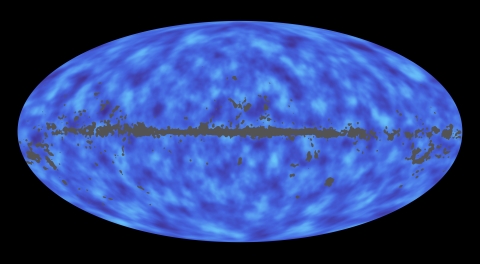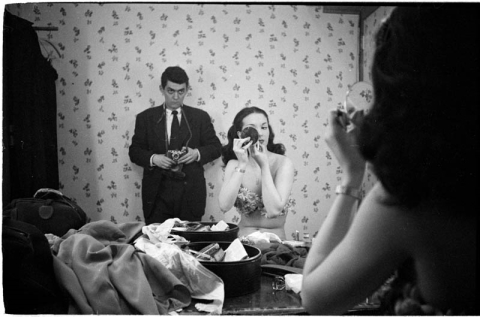Samuel Beckett was notoriously shy around recording devices. He would spend hours in a studio working with actors, but when it came to recording a piece in his own voice he was elusive. Only a handful of recordings are known to exist. So the audio above of Beckett reading a pair of his poems is extremely rare.
The recordings were made in 1965 by Lawrence Harvey, professor of comparative literature at Dartmouth College, who traveled to Paris to meet with Beckett a number of times from 1961 to 1965 while researching his 1970 book Samuel Beckett, Poet and Critic. At one point during their discussions, Beckett recited several passages from his third but second-published novel, Watt. The book was written in English in the 1940s, mostly while Beckett was hiding from the Nazis in southern France. It’s an experimental novel (Beckett called it an “exercise”) about a seeker named Watt who journeys to the house of the enigmatic Mr. Knott and works for a time as his servant. “Watt” and “Knott” are often interpreted as stand-ins for the question “what?” and unanswerable “not,” or “naught.”
The two poems recited by Beckett are from his 37 intriguing Addenda at the end of Watt. Harvey also recorded Beckett reading a prose passage from the book. The full four-minute tape is now in the collection of the Baker Library at Dartmouth. The short clip above is from the 1993 film Waiting For Beckett. The image quality is poor and there are distracting Dutch subtitles, so perhaps the best way to enjoy the reading is to scroll down and look instead at Beckett’s words while you listen to his voice. He begins with the 4th Addenda, later published as “Tailpiece” in Collected Poems, 1930–1978:
who may tell the tale
of the old man?
weigh absence in a scale?
mete want with a span?
the sum assess
of the world’s woes?
nothingness
in words enclose?
The images in the poem are, according to scholars S.E. Gontarski and Chris Ackerley in their essay “Samuel Beckett’s Watt,” a reworking by Beckett of the biblical passage Isaiah 40:12, which says, “Who hath measured the waters in the hollow of his hand, and meted out heaven with a span, and comprehended the dust of the earth in a measure, and weighed the mountains in scales, and the hills in a balance?” The next poem is the 23rd Addenda. It tells of Watt’s long and fruitless journey through barren lands:
Watt will not
abate one jot
but of what
of the coming to
of the being at
of the going from
Knott’s habitat
of the long way
of the short stay
of the going back home
the way he had come
of the empty heart
of the empty hands
of the dim mind wayfaring
through barren lands
of a flame with dark winds
hedged about
going out
gone out
of the empty heart
of the empty hands
of the dark mind stumbling
through barren lands
that is of what
Watt will not
abate one jot
If Beckett seems to mispronounce certain consonant sounds, it may have something to do with a surgery he had in November of 1964 to remove a tumor in his jaw. The surgery temporarily left Beckett with a hole in the roof of his mouth. According to a 1998 article by Peter Swaab in The Times Literary Supplement, the recordings were probably made in March of 1965, when Beckett was awaiting a follow-up surgery to fix his palate. Still, many listeners have been struck by the beauty of the recordings. As Swaab writes:
Beckett’s voice is unexpectedly soft, and seems more suited to the serenely commiserative vein of his writing than the splenetic and cynical one. He reads the poems a lot more slowly than the prose–with a pronounced chanting mellifluousness.… The overall effect of these rare and fascinating recordings is of a delivery like that which Beckett recommended to the actor David Warrilow for Ohio Impromptu, “calm, steady, designed to soothe”–or (to bring in two of the central words in Watt) a “murmur” meant to “assuage.” The tape evidently records a sort of rehearsal, and the perfectionist Beckett would surely not have been satisfied with it, but it is good to know that his voice has not altogether disappeared.
via A Piece of Monologue
Special thanks to Dr. Mark Nixon, reader in Modern Literature at the University of Reading and director of the Beckett International Foundation, for confirming the authenticity of the recording and pointing us on the way to more information.
Related content:
Samuel Beckett Speaks
Samuel Beckett Directs His Absurdist Play Waiting for Godot (1985)
Find Works by Beckett in our Free Audio Books and Free eBooks collections






